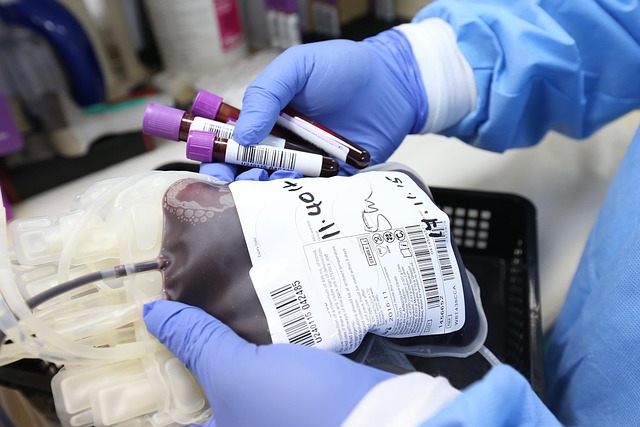Early HIV Symptoms: What To Watch For And When To Get Tested
Explore the challenges of identifying early symptoms, the role of testing in health management, advancements in testing technology, and the crucial benefits of early antiretroviral therapy initiation. Discover how proactive strategies can enhance both individual and community health outcomes:

What Are the Early Signs of HIV Infection?
HIV infection typically progresses through several stages, with the acute phase occurring 2-4 weeks after exposure. During this initial stage, many people experience flu-like symptoms that are often dismissed as a common viral infection. These early signs may include:
-
Fever (often the first symptom)
-
Fatigue and general malaise
-
Sore throat
-
Swollen lymph nodes, particularly in the neck, armpits, and groin
-
Muscle and joint pain
-
Night sweats
-
Skin rash (typically flat, red spots on the chest, face, or extremities)
-
Headache
-
Mouth ulcers or sores
What makes these symptoms challenging to recognize as HIV-specific is their similarity to other common illnesses. Additionally, not everyone experiences symptoms during acute HIV infection—some people remain asymptomatic while the virus establishes itself in the body. The symptoms, when present, typically last for 1-2 weeks before subsiding as the body enters the clinical latency stage, where HIV continues to replicate but at lower levels.
How Soon After Exposure Should You Get Tested?
The timing of HIV testing is crucial for accurate results. After a potential exposure, there’s a “window period” when the infection might not be detectable by tests, even though the person is infected and potentially contagious.
For most modern HIV tests, the recommended waiting periods are:
-
Antibody tests: 23-90 days after potential exposure
-
Antigen/antibody combination tests: 18-45 days after exposure
-
Nucleic Acid Tests (NATs): 10-33 days after exposure
However, if you suspect exposure or experience acute HIV symptoms, don’t wait—consult a healthcare provider immediately. They may recommend immediate testing with follow-up tests at appropriate intervals. In cases of known high-risk exposure, post-exposure prophylaxis (PEP) may be recommended, which must be started within 72 hours of exposure to be effective.
What Are the Different Types of HIV Tests Available?
Several testing methods can detect HIV infection, each with specific advantages and limitations:
Laboratory Tests:
-
Antibody tests: Detect antibodies produced by your body in response to HIV infection
-
Antigen/antibody combination tests: Look for both HIV antibodies and antigens (parts of the virus itself)
-
Nucleic Acid Tests (NATs): Detect the virus’s genetic material directly
Rapid Testing Options:
-
Rapid antibody screening tests: Results available in 20-30 minutes
-
Home test kits: Self-administered tests available over-the-counter
-
Oral fluid tests: Non-invasive option that uses a mouth swab instead of blood
Each test type has different sensitivity rates and window periods. Laboratory-based fourth-generation antigen/antibody tests are currently considered the most accurate for early detection, while rapid tests offer convenience but may not detect very recent infections.
Why is Early HIV Detection Important?
Early HIV detection provides numerous benefits both for individuals and public health:
For the individual, early diagnosis enables:
-
Prompt initiation of antiretroviral therapy (ART)
-
Preservation of immune system function
-
Prevention of progression to AIDS
-
Reduced risk of developing HIV-related complications
-
Better long-term health outcomes and normal life expectancy
From a public health perspective, early detection helps:
-
Reduce transmission rates as people who know their status can take precautions
-
Connect individuals to care and support services
-
Decrease community viral load
-
Support HIV prevention efforts
Research shows that people who start treatment soon after infection maintain higher CD4 counts (immune cells targeted by HIV) and achieve viral suppression faster. With current treatments, most people with HIV who receive early diagnosis and consistent treatment can achieve an undetectable viral load, meaning they cannot transmit the virus to sexual partners.
What Are the Costs and Options for HIV Testing?
HIV testing accessibility varies widely depending on location, insurance coverage, and testing method. Understanding the financial aspects can help individuals choose the most suitable option.
| Testing Option | Approximate Cost | Coverage/Accessibility |
|---|---|---|
| Public Health Clinics | Free or low cost ($0-30) | Widely available, often anonymous or confidential |
| Primary Care Provider | $0-200 depending on insurance | Covered by most health insurance plans |
| Community Organizations | Free | Limited locations, targeted populations |
| Home Test Kits | $40-50 per kit | Available over-the-counter, no insurance coverage |
| Laboratory Tests | $35-200 without insurance | Usually covered with insurance or prescription |
| Emergency PEP Testing | $0-500+ depending on insurance | Available at emergency departments, urgent care |
Prices, rates, or cost estimates mentioned in this article are based on the latest available information but may change over time. Independent research is advised before making financial decisions.
Many cities offer free testing through health departments, LGBTQ+ centers, and community organizations. The CDC’s GetTested tool helps locate nearby testing services. For those with insurance, the Affordable Care Act requires coverage for HIV screening without copays for most plans. Additionally, pharmaceutical assistance programs and state AIDS Drug Assistance Programs (ADAP) can help cover treatment costs if testing positive.
Conclusion
Recognizing the early symptoms of HIV and understanding testing options are crucial steps in addressing this manageable chronic condition. While initial symptoms may mimic common illnesses, paying attention to risk factors and seeking appropriate testing can lead to early diagnosis. With modern treatments, people diagnosed early can expect to live long, healthy lives with minimal complications. Whether experiencing symptoms or following recommended screening guidelines, regular testing remains an essential tool in both individual health management and broader efforts to reduce HIV transmission.
This article is for informational purposes only and should not be considered medical advice. Please consult a qualified healthcare professional for personalized guidance and treatment.




